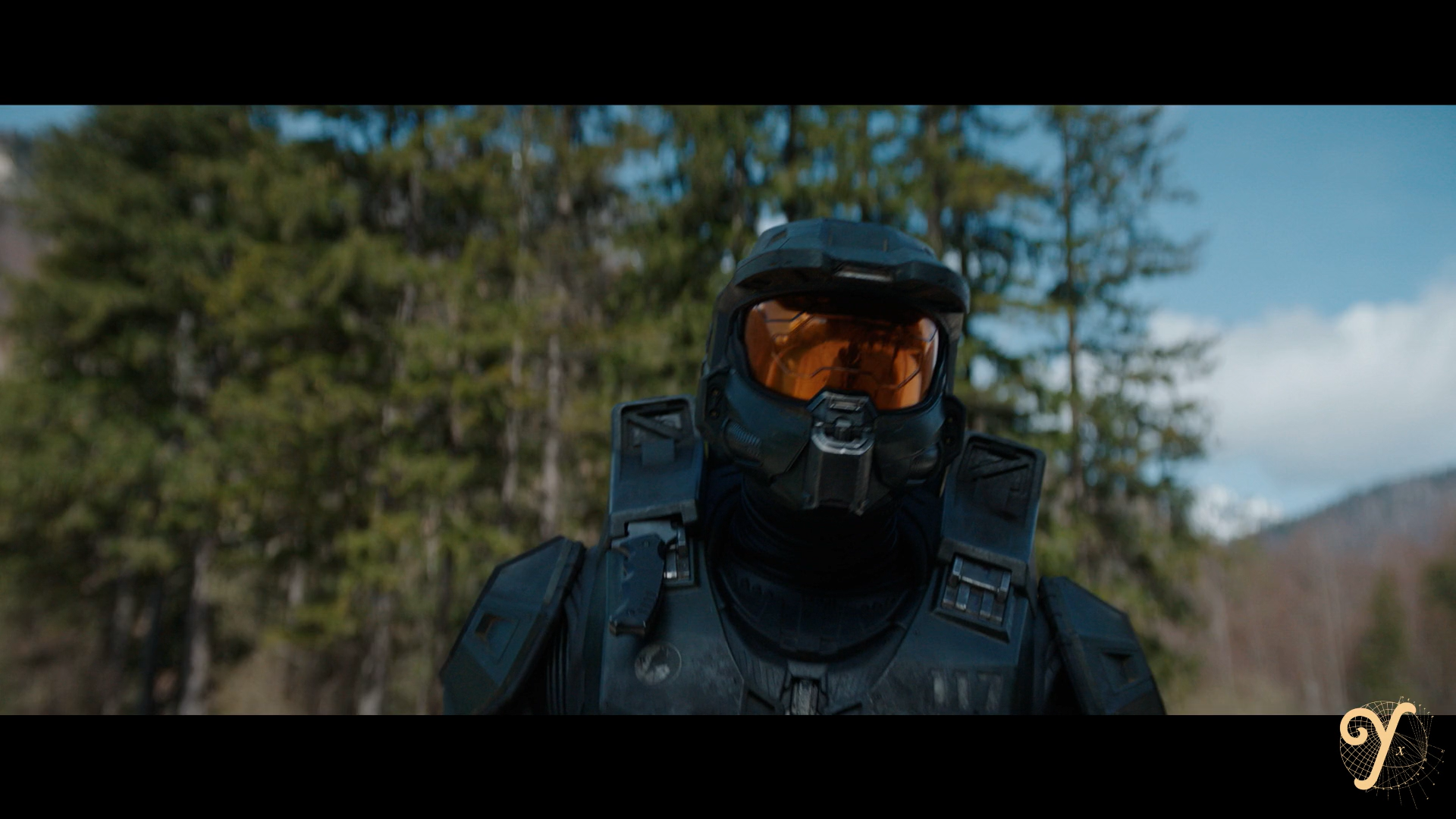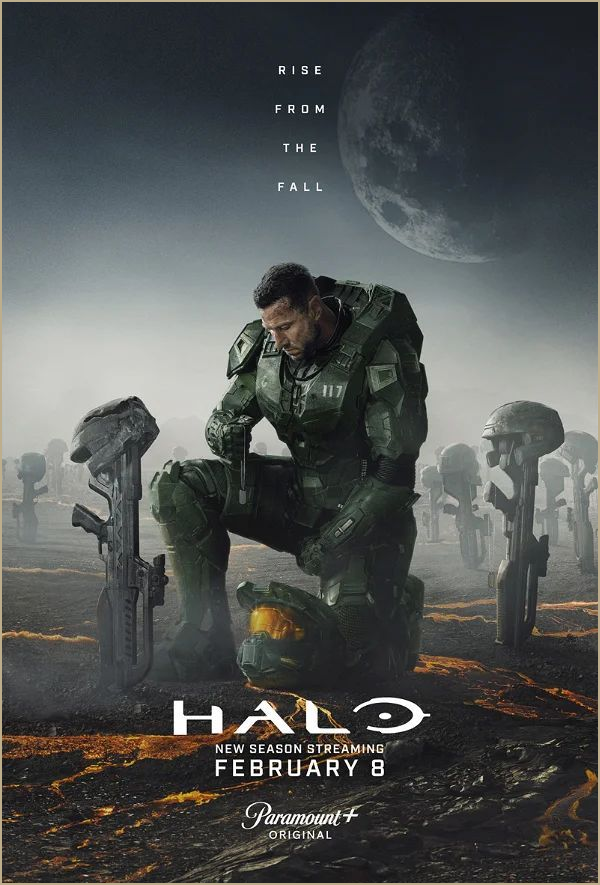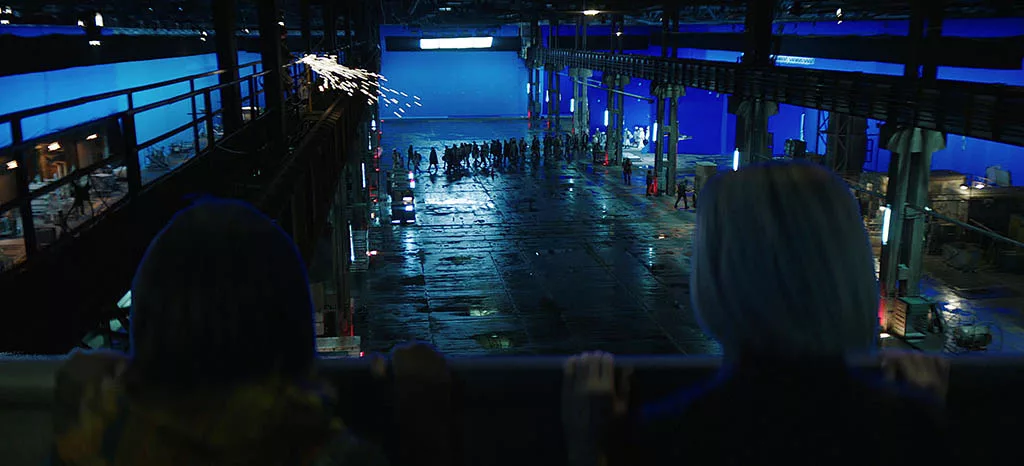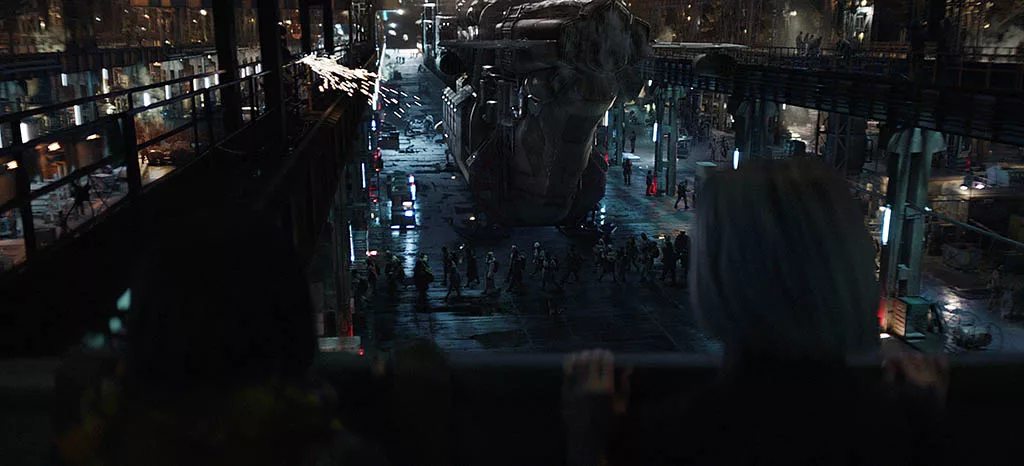DIRECTOR : Debs Paterson, Craig Zisk, Otto Bathrust, Dennie Gordon
PRODUCTION VFX SUPERVISOR : Wojciech Zielinski
PRODUCTION VFX PRODUCER : Mike May
THE YARD VFX SUPERVISOR : Harry Bardak
THE YARD VFX PRODUCER : Diego Cordier-Royer and Elisa Perez
The highly anticipated second season of Halo, the Paramount+ series based on the iconic video game franchise, continues to delve into the 26th-century conflict between humanity and the alien Covenant. The narrative centers on the legendary Spartan soldier, Master Chief (Pablo Schreiber), as he uncovers the mysteries of the Halo ring. Season 2 has garnered unanimous acclaim for its visual quality and fidelity to the game, with critics praising its ability to capture the essence of the original while elevating the narrative and action to new heights.
This season also features a notable tonal shift, prioritizing the emotional resonance of its narrative. Showrunner David Wiener’s vision for the series has significantly advanced its overall progression, delving deeper into character development and the stakes of the conflict. By revisiting the roots of Halo, particularly the ferocity of the Covenant, Wiener aimed to create a gritty realism that immerses the audience in the fight. He draws parallels between the viewing experience and playing Halo, emphasizing the thin boundary between action and horror.
With the stakes raised both narratively and visually, our team at The Yard was responsible for delivering high-quality VFX that enhanced this captivating experience. Collaborating closely with VFX supervisor Wojciech Zielinski, we crafted intricate CG designs, immersive environments, and thrilling action sequences throughout the episodes. From the expansive asteroid-based docking bay to the Forerunner City, each scene required a blend of technical precision and creative artistry. With contributions ranging from set extensions and reconstructions to various CG assets, including crowds and vehicles, our teams were thrilled to contribute bringing Halo- Season 2 to life.

WATCH OUR VFX SHOWREEL
SCOPE OF WORK
For 'Halo - Season 2', The Yard delivered more than 380 VFX shots, including three shots in full CG. Below, you'll find details on four of the most notable sequences our team contributed to.
Docking Bay Escape
For the Docking Bay sequence in Halo Season 2, our team at The Yard faced the exciting challenge of creating a vast space dock set within the confines of an asteroid. The sequence revolved around the crew’s high-stakes escape, involving the theft of Soren's spaceship. While the production team constructed a practical section of the dock, it was our responsibility to extend this set digitally, giving it the grand scale required for the scene. We expanded the dock to an impressive 400 meters, transforming it into a massive, complex environment filled with life and detail.
To create the imposing walls of the asteroid, we utilized 3D scans of cliffs to capture their rugged, natural texture. This approach allowed us to blend the CG extension seamlessly with the practical set. The structural elements of the dock—scaffolds, machinery, ladders, cables, fuel tanks, and even the enormous doors—were all generated procedurally. This method not only offered flexibility in design but also ensured consistency throughout the environment. Additionally, we populated the dock with various cargo ships, including the imposing Bodegraven, to emphasize its role as a bustling spaceport.
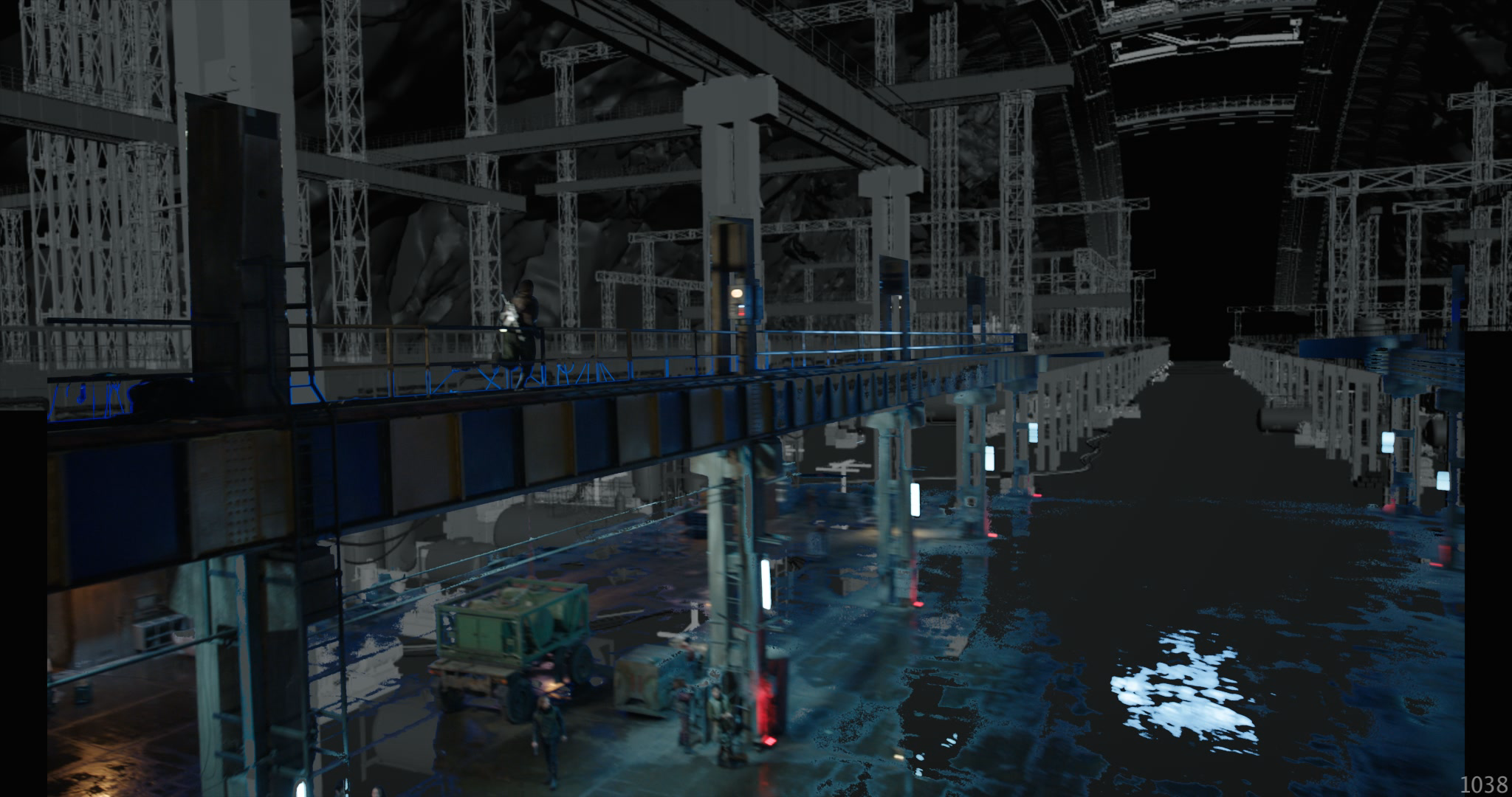
A key asset in the sequence was Soren’s ship, which required significant updates from the season 1 asset our team received, since it was featured prominently in close-up shots. Our FX department redesigned the thrusters, focusing on creating a more dynamic and powerful visual impact to enhance the sense of urgency in the escape. Animation and timing played a pivotal role; although we started with a solid Previz, refining the motion and pacing of the scene was crucial to maintaining tension.
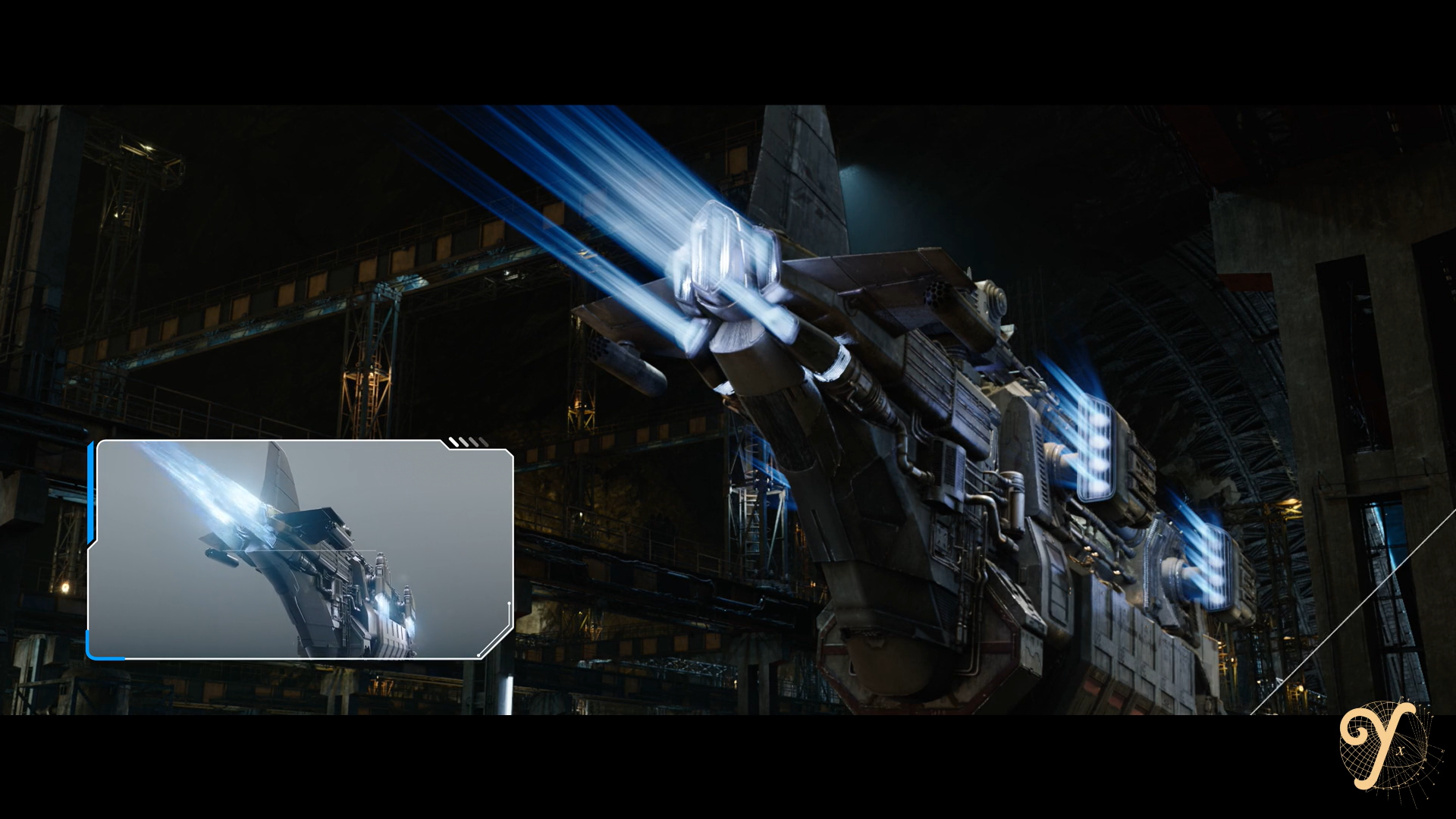
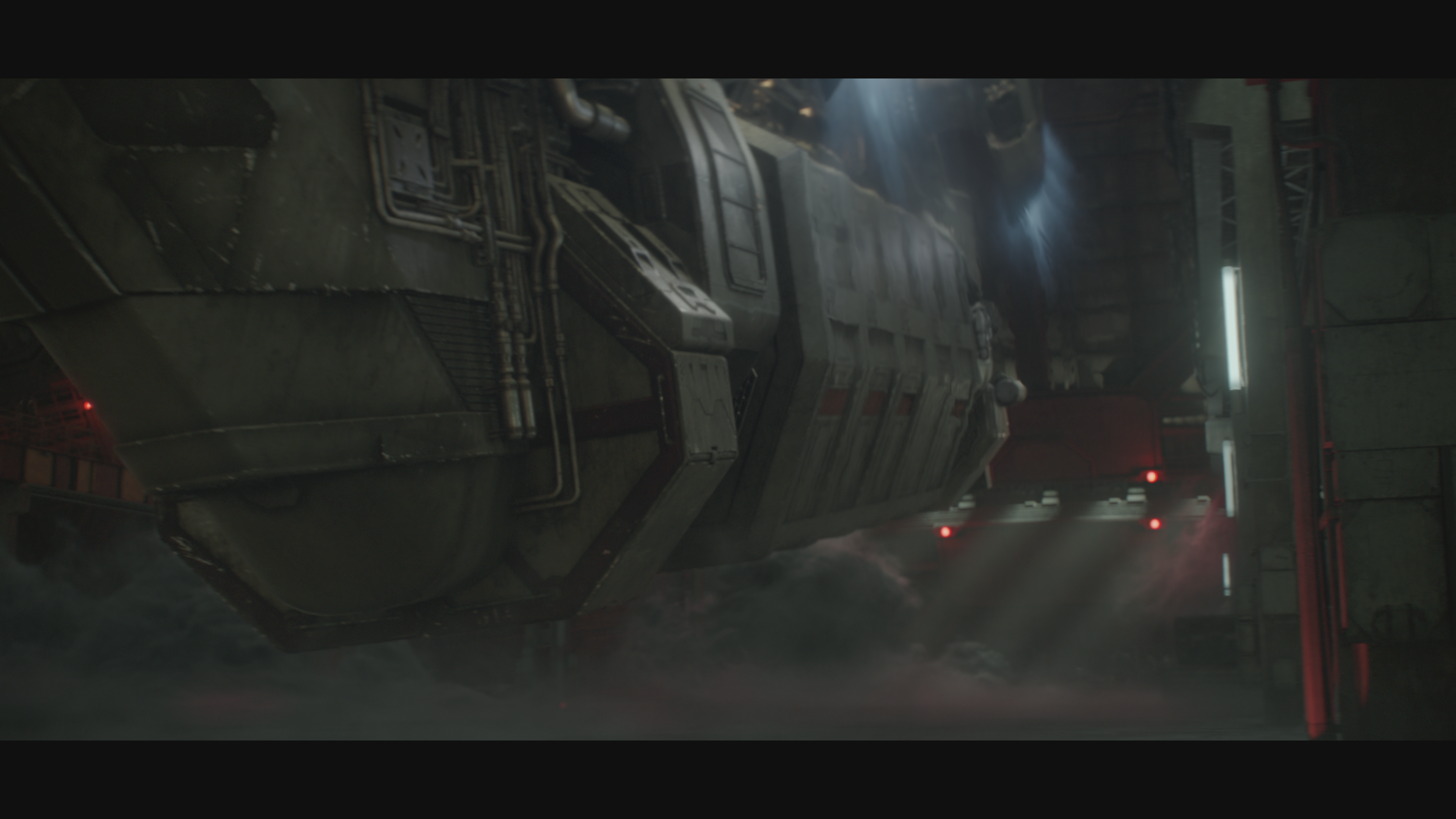
One of the more complex aspects of the sequence was the integration of the CG elements with the live-action footage. The wet, reflective ground on set amplified the challenge, as it extensively mirrored the blue screen, causing significant color contamination across the plate. Our team meticulously handled the despilling process to ensure that the blue hues didn’t bleed into other parts of the image. The sequence's use of anamorphic lenses added another layer of difficulty, as we had to replicate the unique distortions, chromatic aberrations, and imperfections typically seen with such lenses, ensuring that the CG elements blended naturally with the live-action footage.
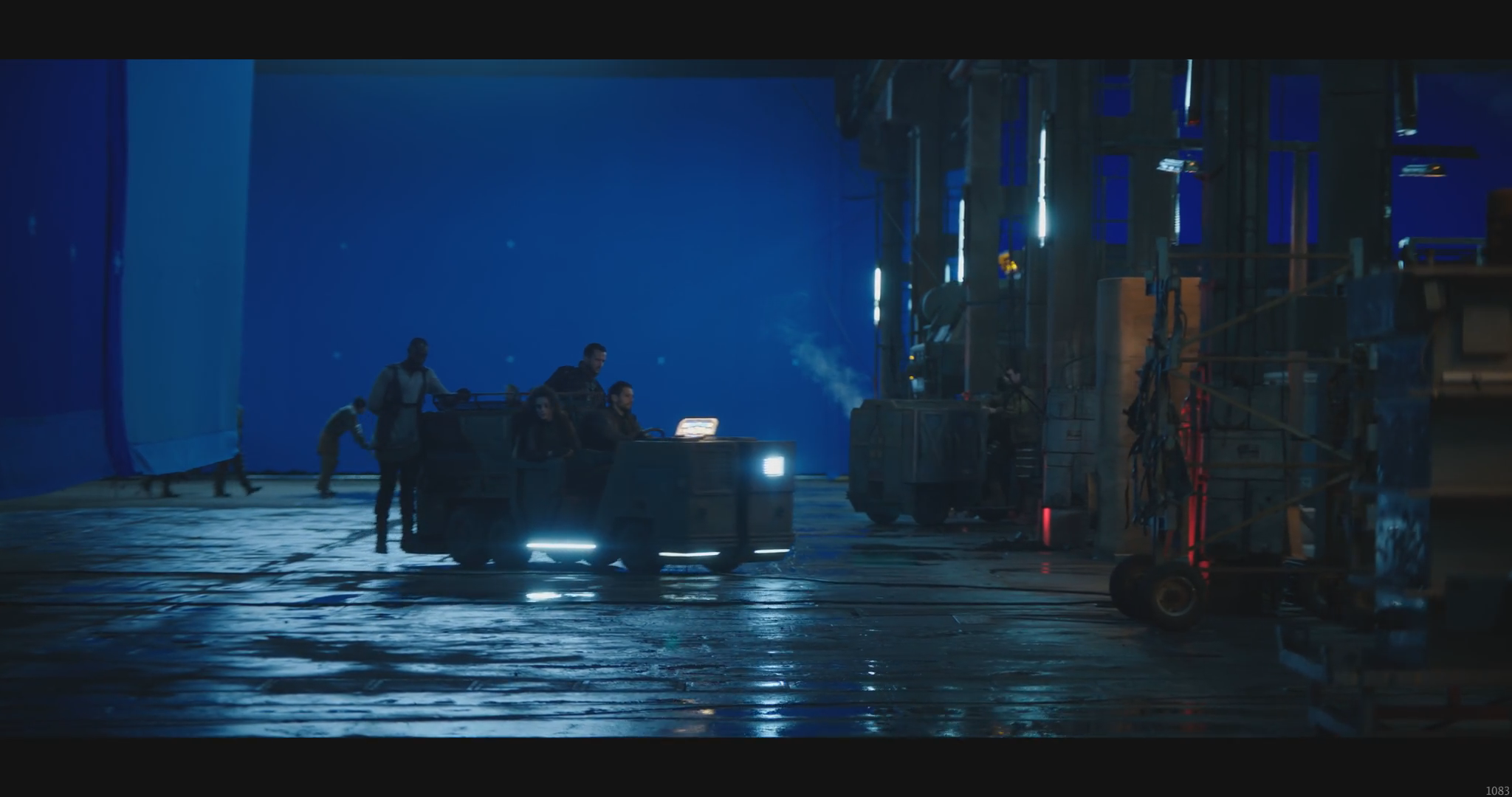
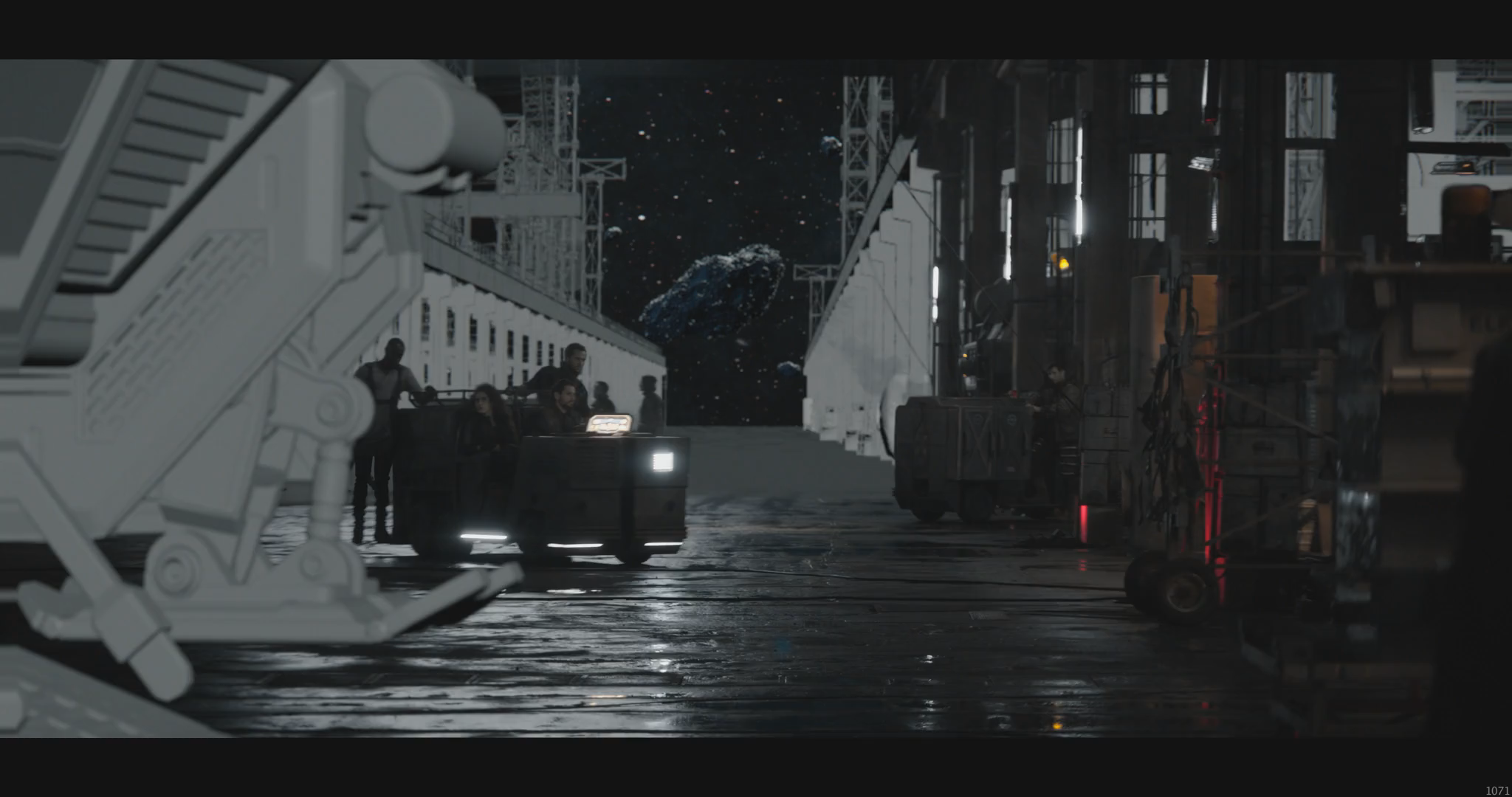
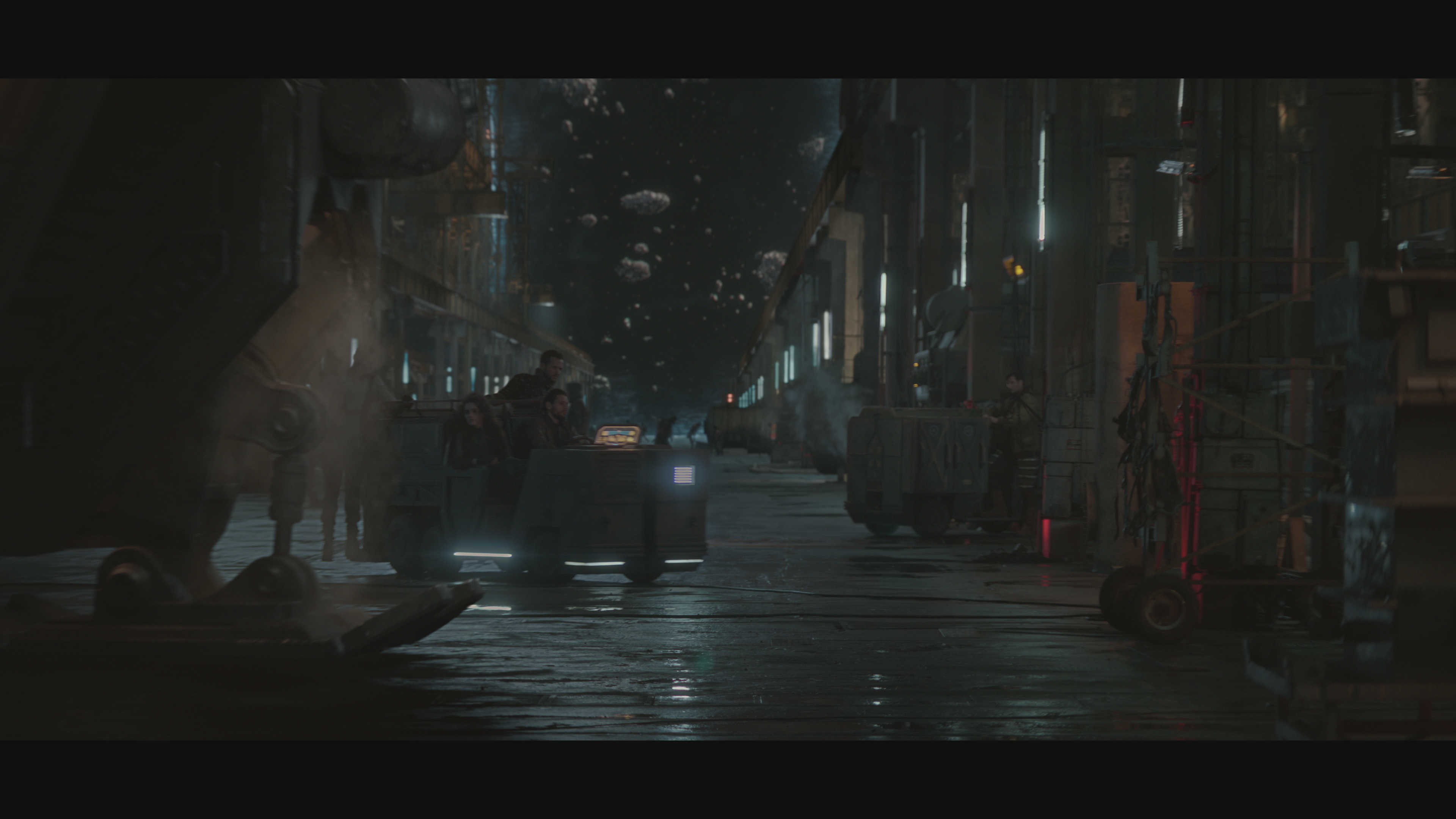
Finally, we augmented the scene with additional digital actors to portray the bustling crew within the dock bay. This added authenticity to the sequence, as the crew’s presence heightened the tension and stakes of the escape. Overall, this sequence represented a significant technical and creative achievement for our team, blending practical effects, CG, and meticulous compositing to bring this pivotal moment to life.
Onyx Valley and Camp Currahee
For the Onyx Valley and Camp Currahee sequences, our VFX work focused on creating a highly detailed and alien landscape while upgrading key assets from the game to achieve cinematic quality. This process involved uprezzing them to meet the visual standards of a high-budget production. Simultaneously, we had to design an alien valley that would serve as a believable backdrop, featuring cliffs and plateaus that appeared otherworldly yet grounded.
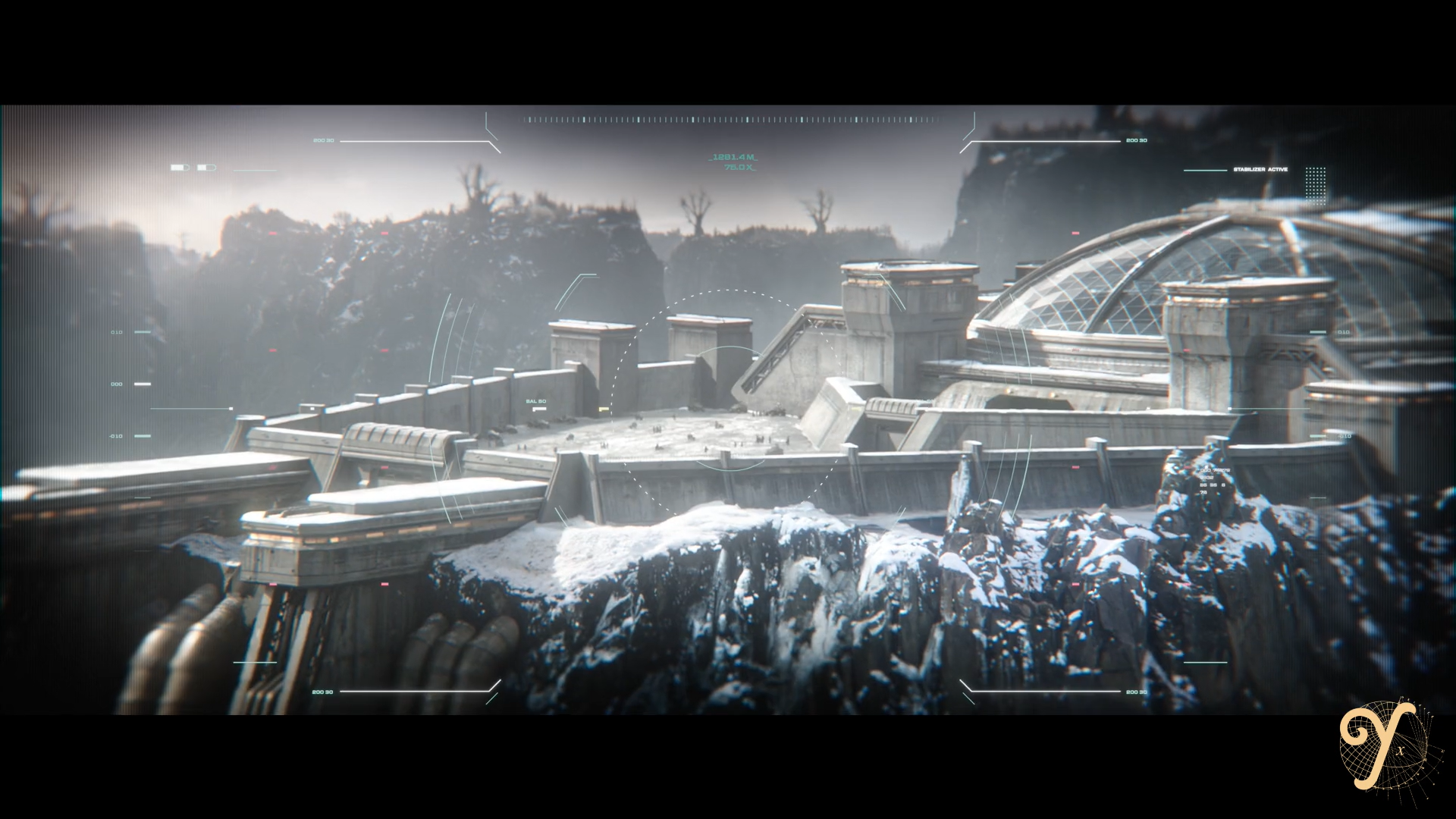
To achieve this, we drew inspiration from the unique geological formations of the Causeway Coast in Ireland, particularly its iconic basalt cliffs, while ensuring the design retained an otherworldly feel. Our goal was to create a landscape that felt both ancient and mysterious. The alien trees populating this valley were modeled with the Kapok tree in mind, specifically its vast, sweeping buttress roots, which helped give the environment an exotic and grand quality. While the cliffs were generated using a procedural system we developed to add randomness and uniqueness to the rock formations, the alien trees were carefully handcrafted, adding a personal artistic touch to the natural environment.
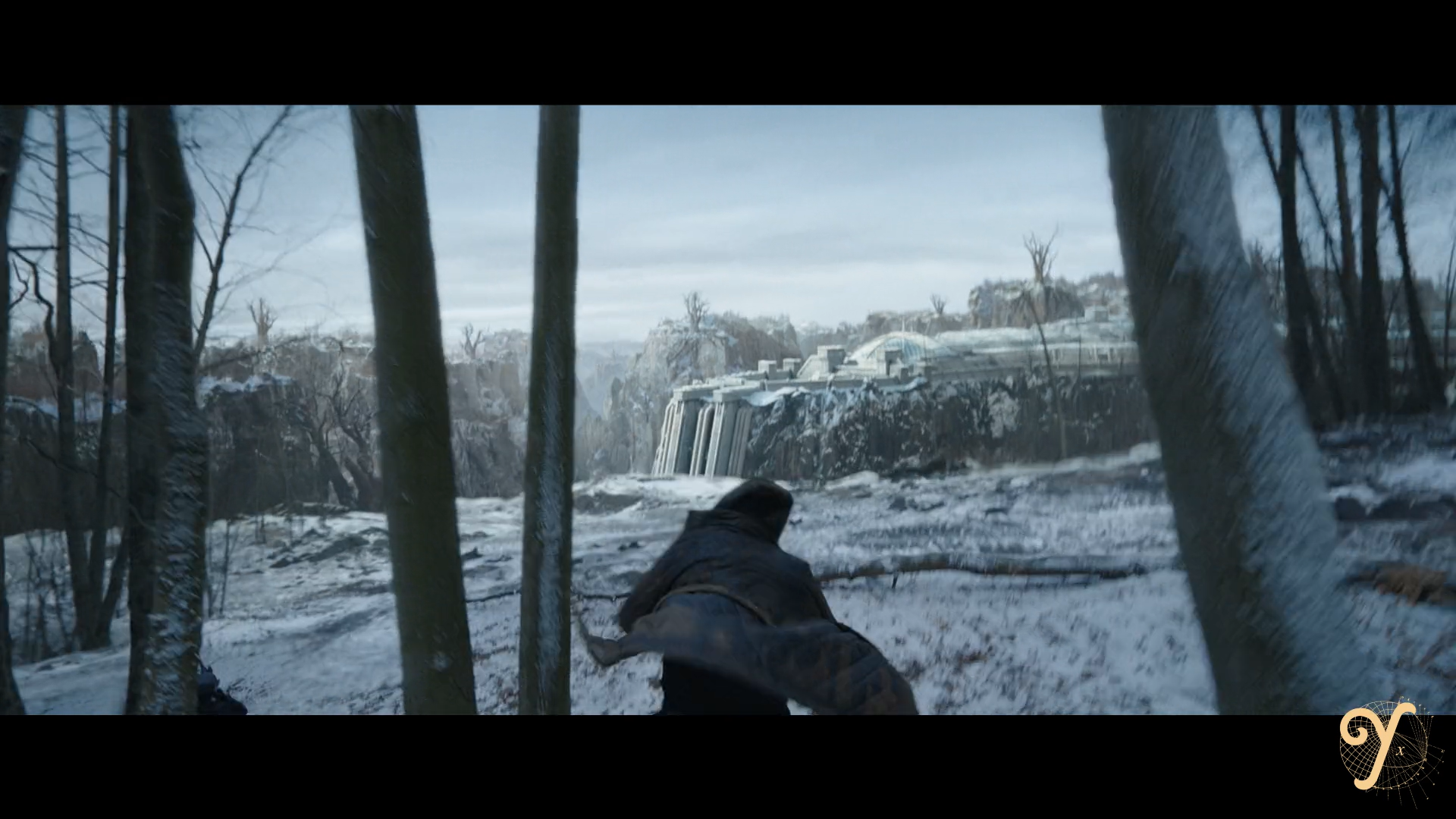
Another important aspect of this sequence was the snow. Since the cliffs and trees we designed didn’t exist in reality, we needed to create and extend snow coverage across the ground and on the foliage to match the established look of the planet. We used procedural textures to lay out the snow and ensure it interacted naturally with the surfaces of the environment, creating a cold, rugged atmosphere. After laying out the valley and positioning the camp within it, we further enhanced the scene by setting the mood through lighting and procedural texturing. Our digital matte painters, led by Noemie Cauvin, added the final level of detail, painting over the renders to perfect the environment and achieve a photo-realistic look.
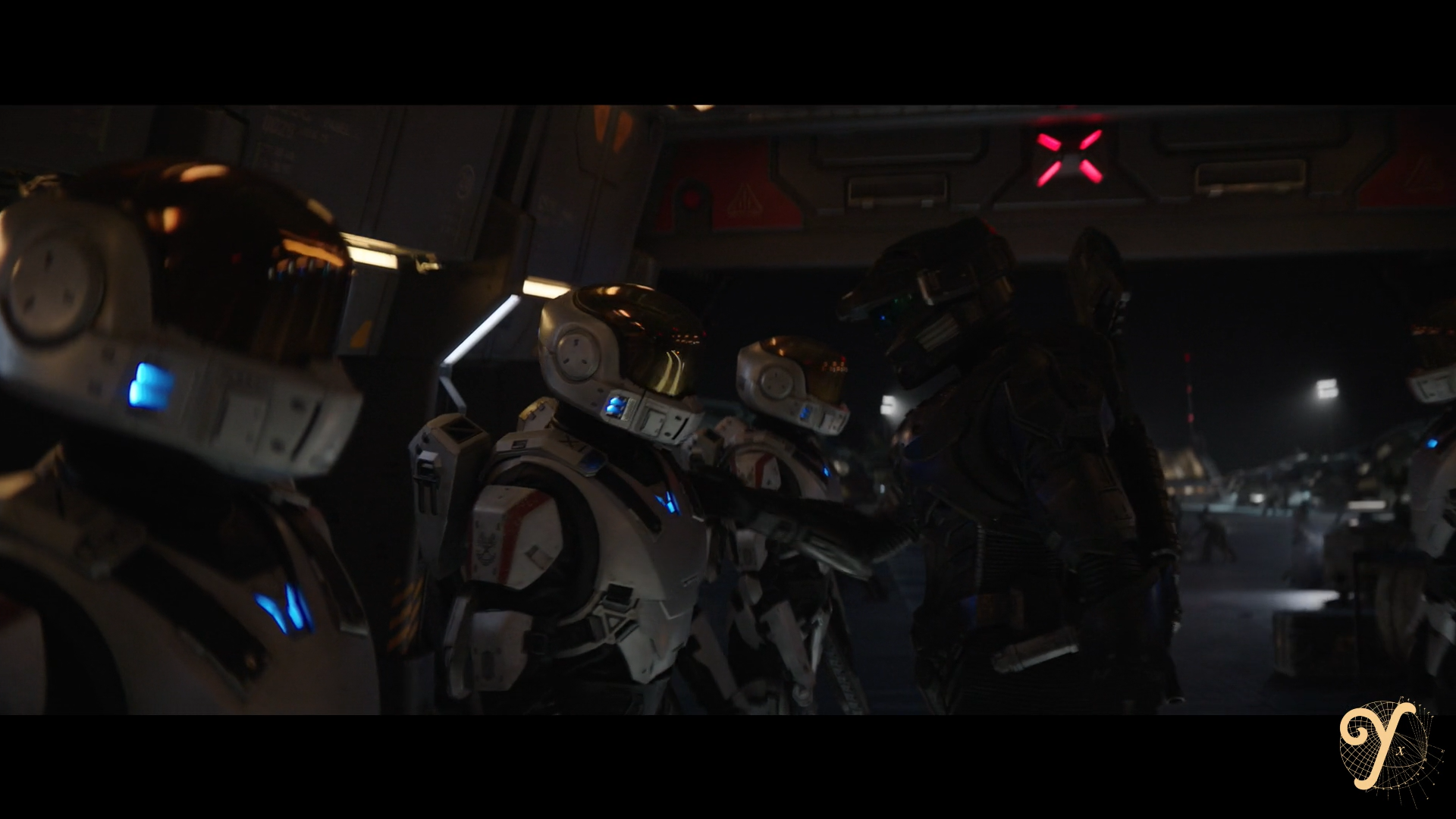
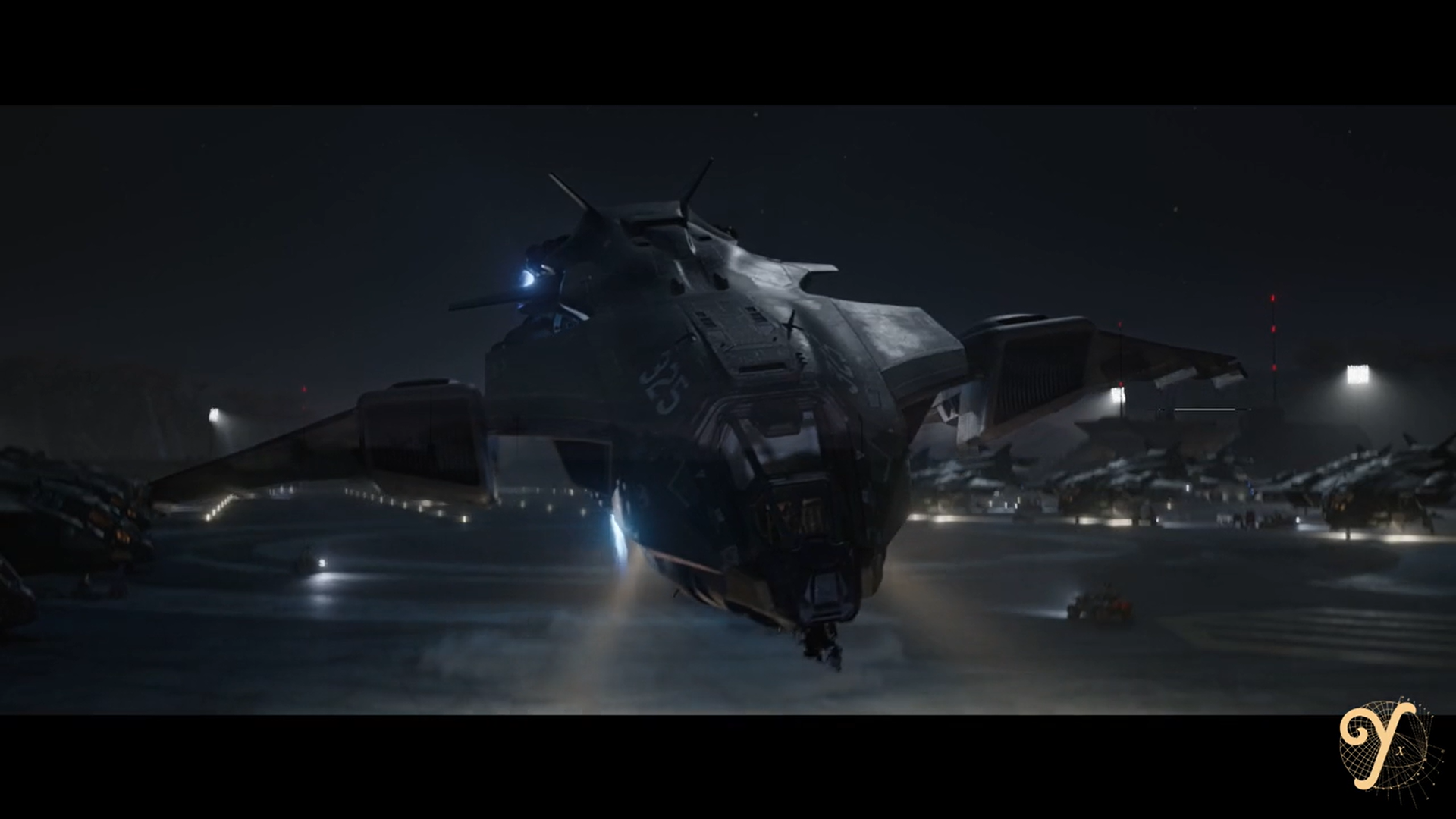
When it came to the camp itself, we paid close attention to detail, especially in close-up shots of the landing pads and surrounding military activity. One of the highlights of this sequence was the creation of Condor ships taking off from the camp, which added dynamic motion and scale to the scene. The military camp needed to feel alive, so we populated it with the hustle and bustle expected in such a setting, showcasing the military might of the Spartans. We created a scene featuring hundreds of Spartans springing to attention, utilizing a crowd system populated with variations of Spartan models. The characters were animated by hand to ensure their movements conveyed individuality and purpose, enhancing the realism of the military camp's activity.
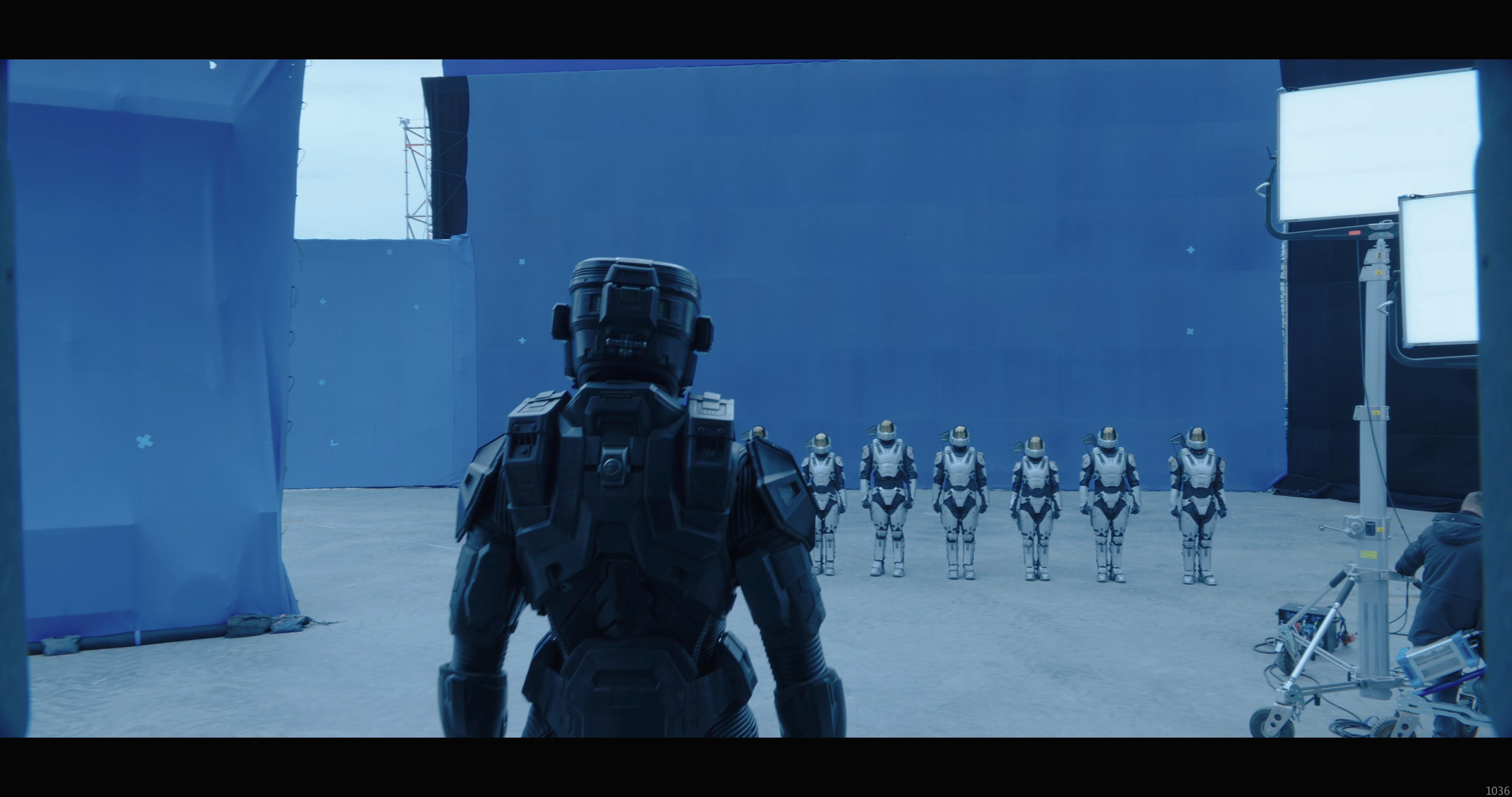
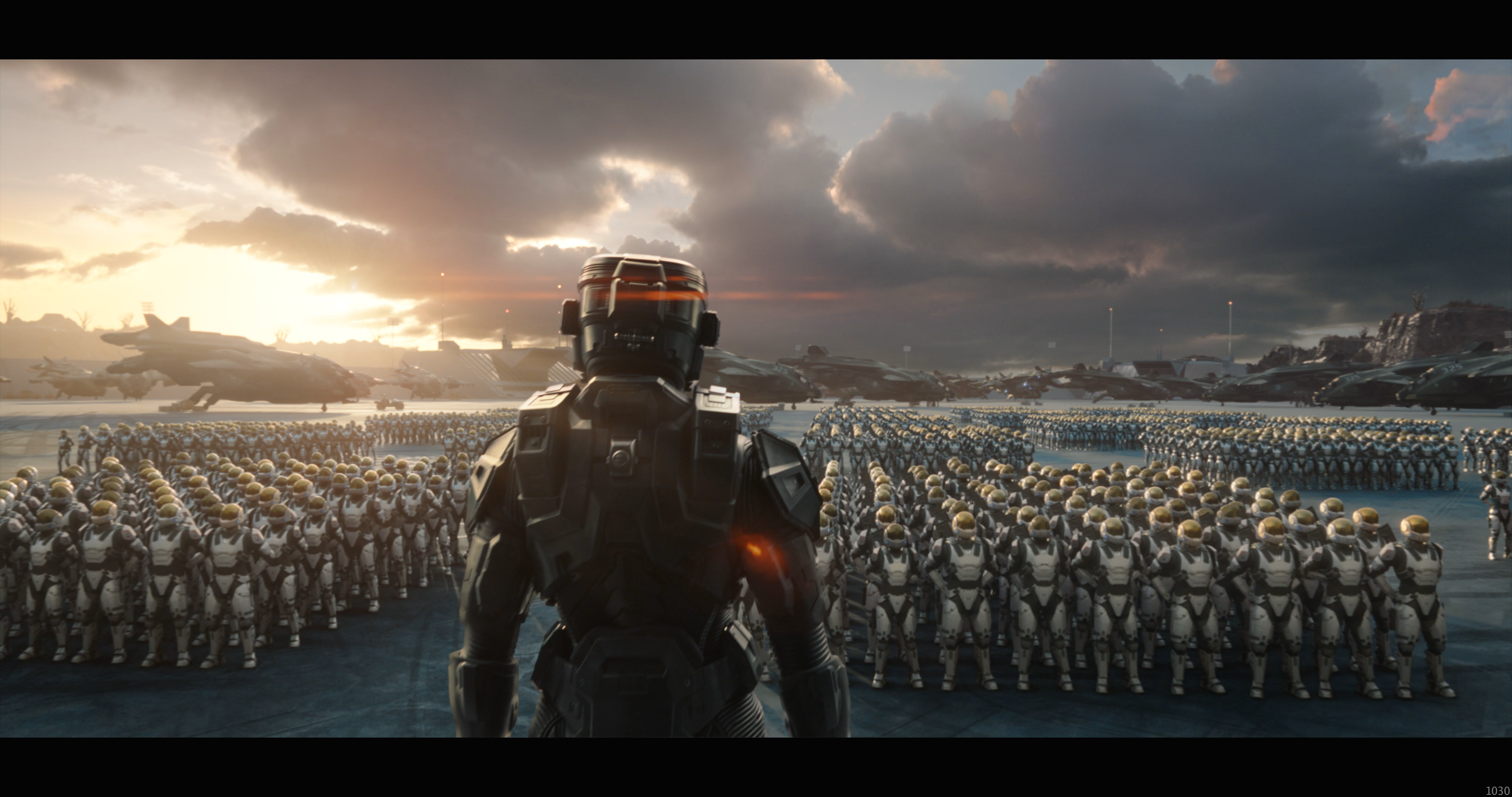
Forerunner City
The Thermopylae episode (S2E07) presented one of the most exciting challenges in terms of world-building and environmental design. The Forerunners City, hidden for centuries, required a design that reflected the advanced technology and mysterious history of the Forerunners civilization. It had to feel ancient yet timeless, evoking both awe and a sense of discovery as the characters stumbled upon it.
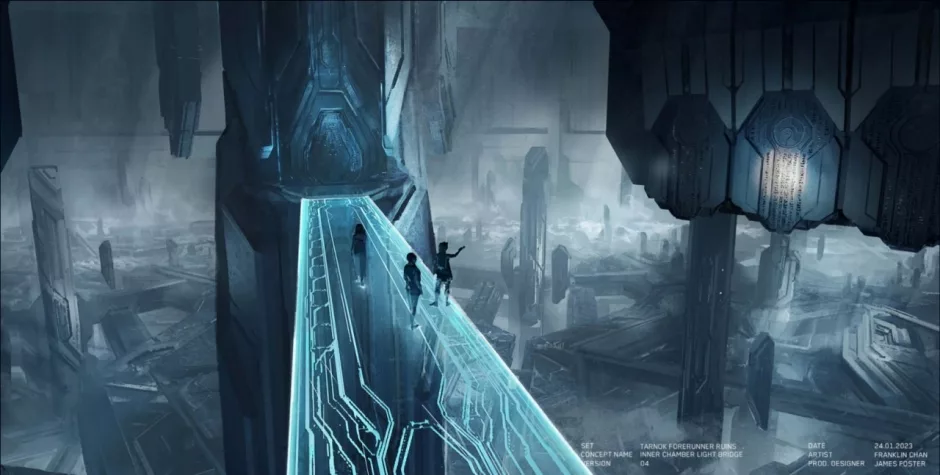
One of the most iconic elements in this sequence was the light bridge. This bridge, composed of panels powered by energy, needed to feel both futuristic and deeply tied to Forerunner technology. Designing how the light bridge would materialize and disappear became a focal point for the CG team. We explored multiple designs and iterations for the bridge's activation, carefully considering how the energy would flow, how the panels would form, and how the bridge would vanish into thin air. Our CG supervisor, Gregory Lanfranchi, devised a method to construct and animate these panels using Houdini proceduralism.
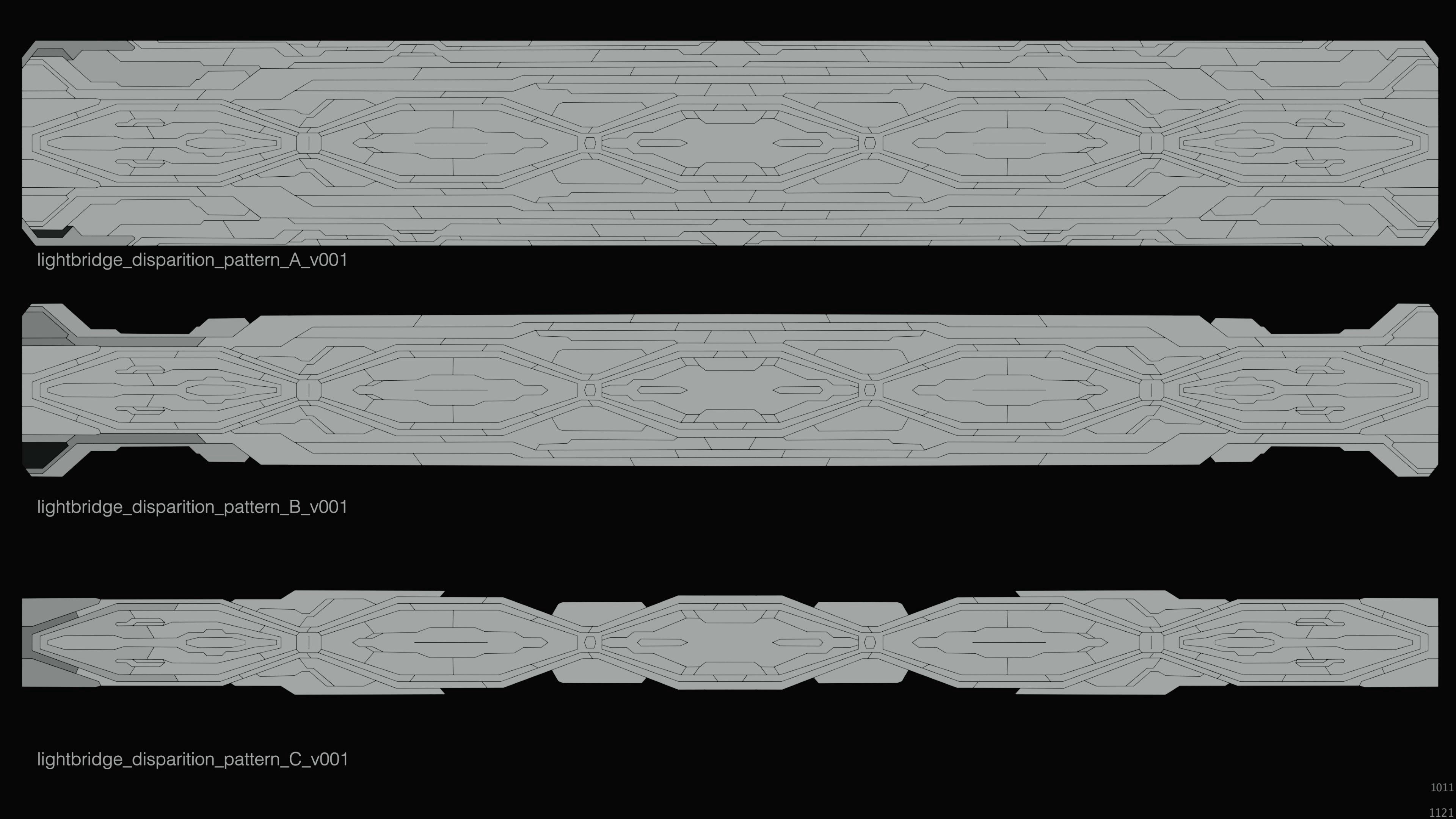
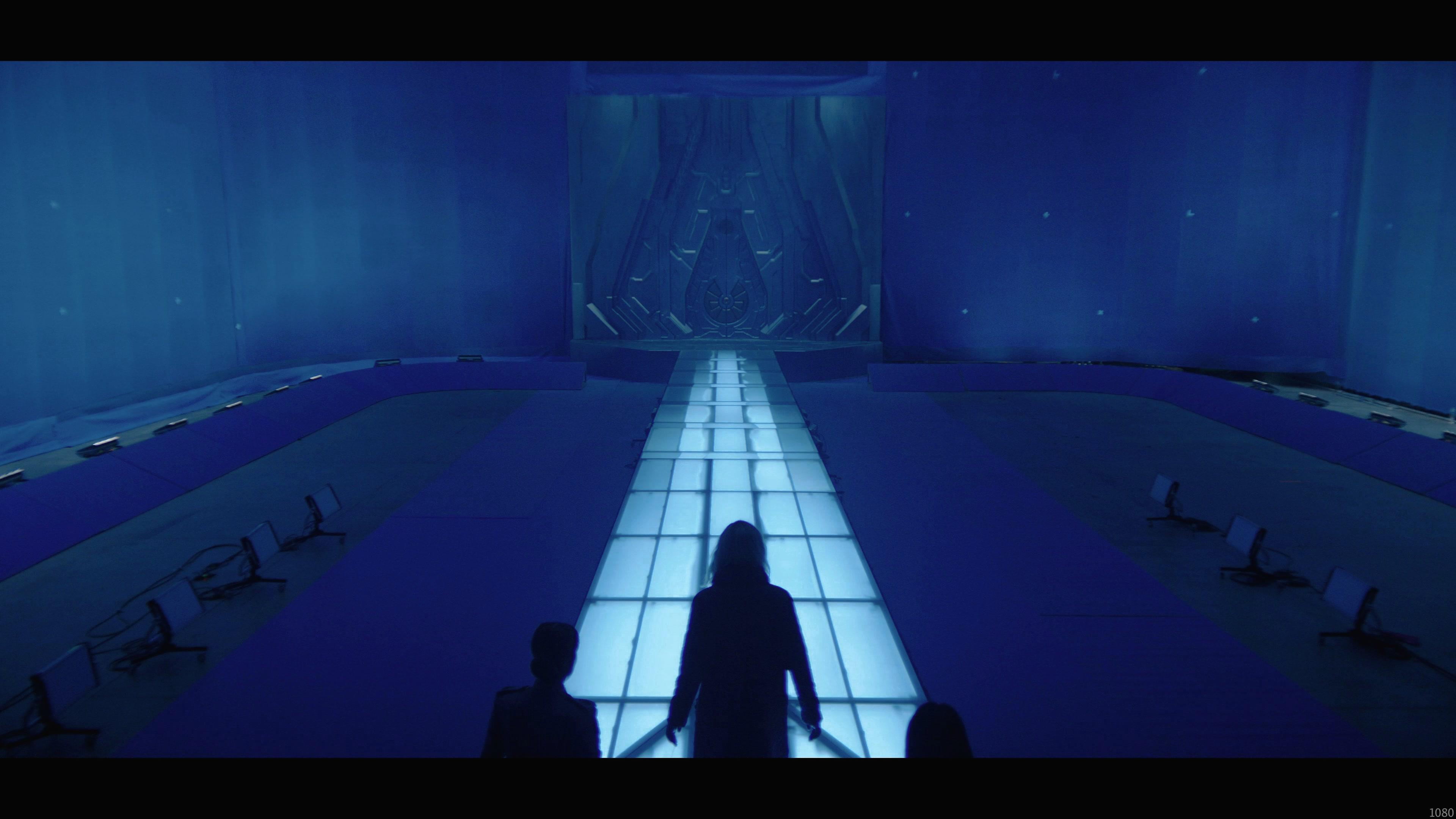
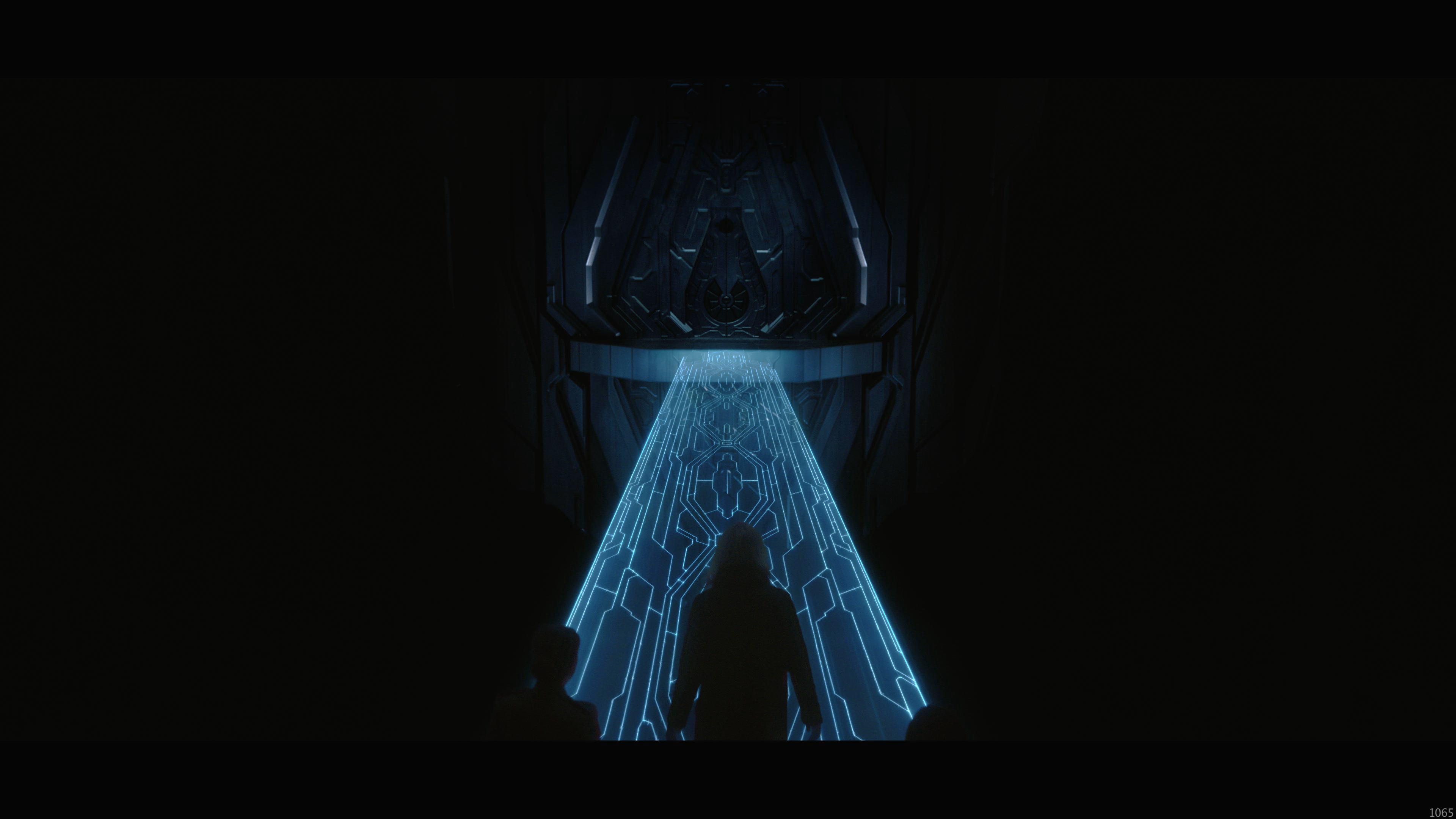
To achieve seamless interaction between the actors and the CG bridge, overall VFX supervisor Wojciech Zielinski made the creative decision to incorporate practical light panels during filming. These panels emitted light in a way that mimicked the glow of the CG light bridge, allowing us to capture realistic lighting on the actors. This practical approach was instrumental in integrating the live-action performance with the digital environment, as the light panels provided the actors with a physical reference point and contributed to the overall believability of the shots.
The Forerunner City itself was designed to be immense, covering a radius of 4 kilometers. To bring this sprawling, advanced metropolis to life, we developed a procedural system to generate the city’s layout and architecture. This approach allowed us to create vast, intricate structures without manually building every element, ensuring that the city felt both immense and detailed. The design reflected the Forerunners' mastery of technology, blending sleek, futuristic architecture with hints of their ancient heritage.
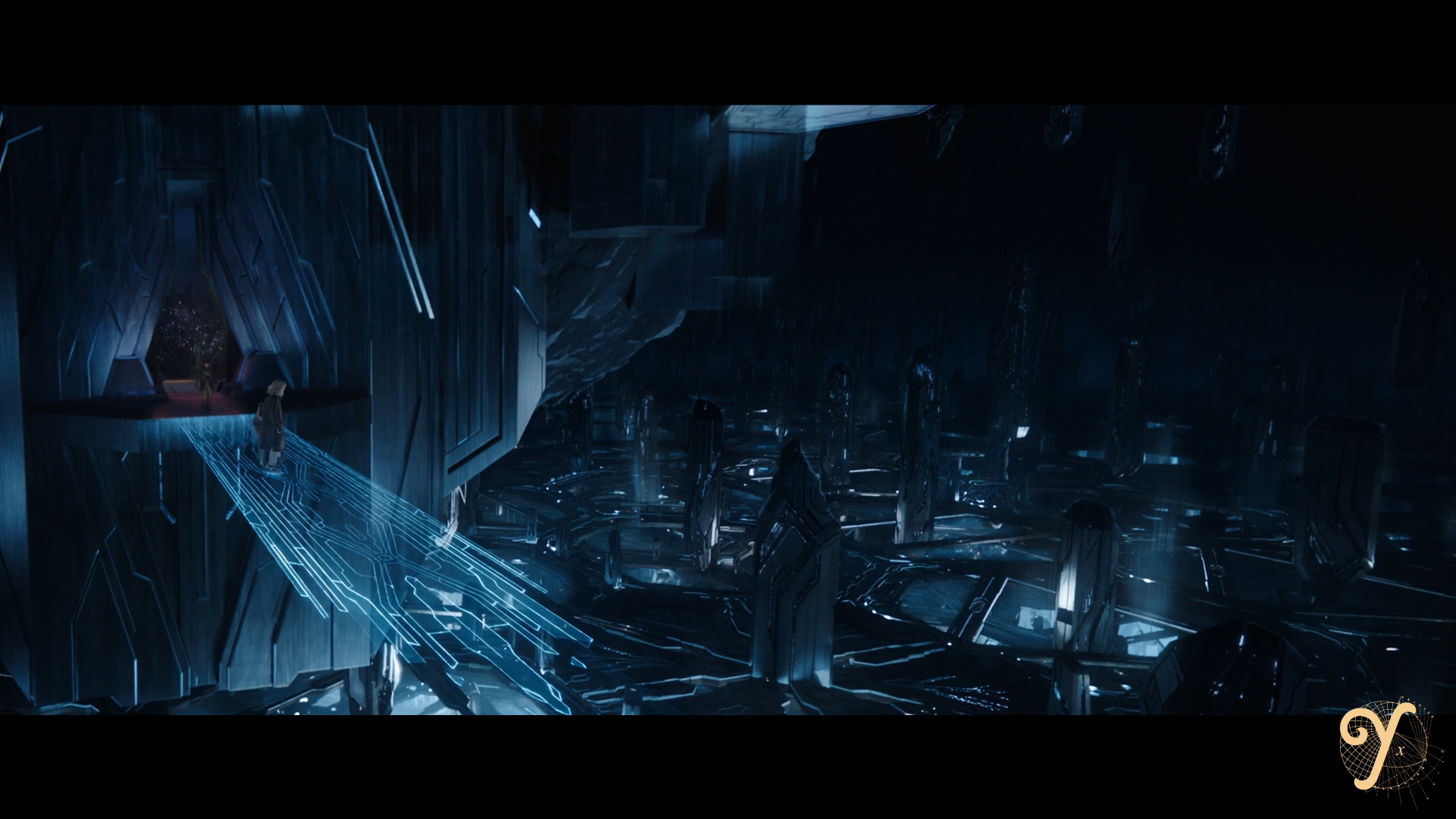
One of the key moments in the sequence was the activation and reveal of the city. This event had to feel momentous, as the long-lost metropolis reawakened after centuries of dormancy. We used a sophisticated lighting system to animate the city's activation, carefully designing the light patterns and energy flows to emphasize the scale of the environment. The interplay of light across the buildings as they illuminated one by one added to the spectacle, making the reveal a truly cinematic experience. The complexity of this lighting design was essential in conveying the sheer scale of the city, as the glow of the lights spread across the landscape, underscoring its vastness.
Halo Environment
For the Halo environment sequence, filming took place at the stunning Predil Lake in Italy, a location intended to represent the lush and vibrant landscape of the Halo ringworld. However, the production faced an unexpected challenge: Italy was experiencing a drought at the time, drastically altering the landscape's appearance. Instead of the luxurious greenery and vivid environment envisioned for the scene, the area appeared drier and less vibrant. Our VFX team was tasked with restoring the location’s lushness, adding greenery and natural elements to transform it back into the vibrant world of Halo. This required careful digital intervention to enhance the foliage, water levels, and overall atmosphere, creating the thriving ecosystem that defines the Halo ring.
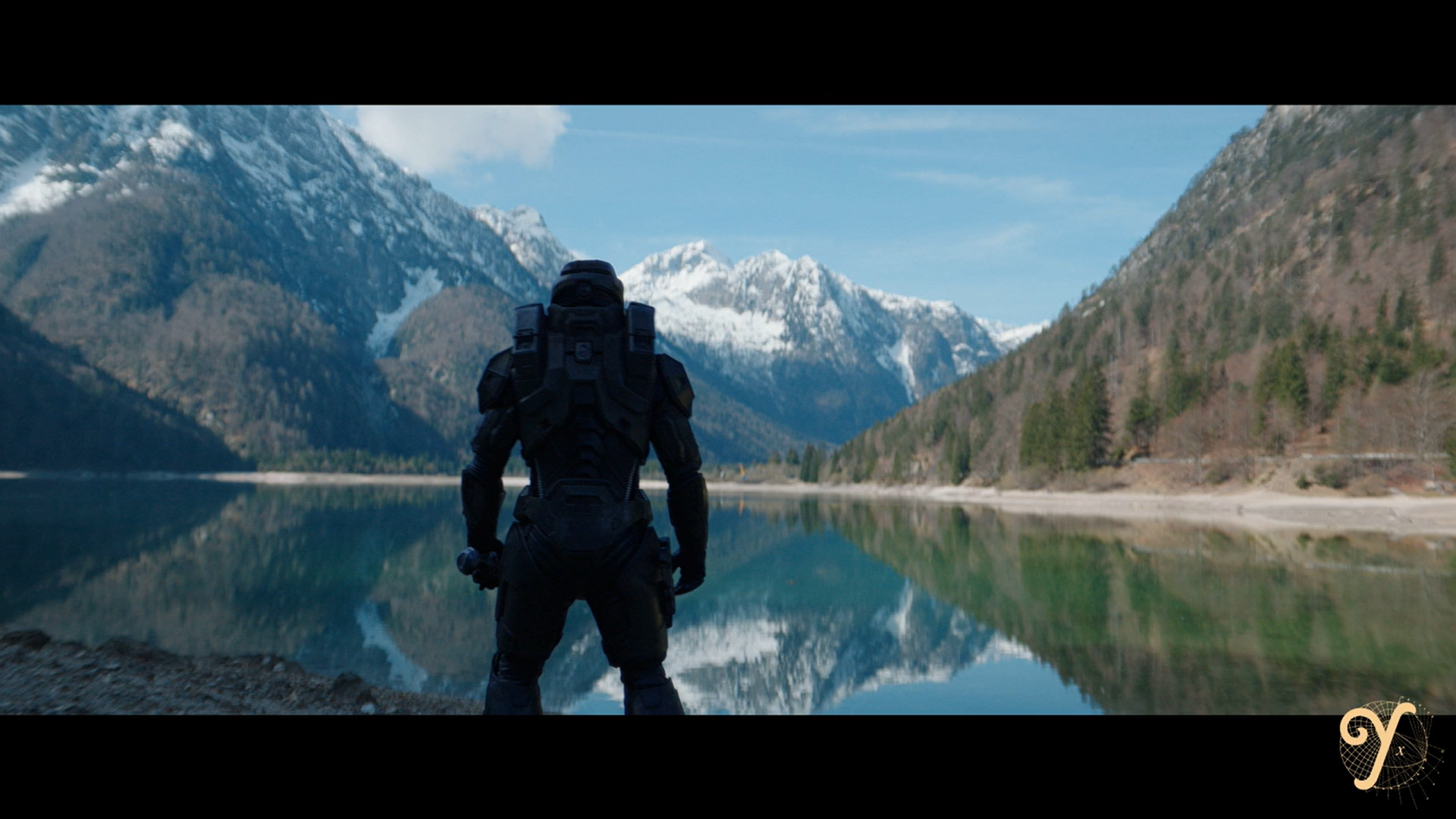
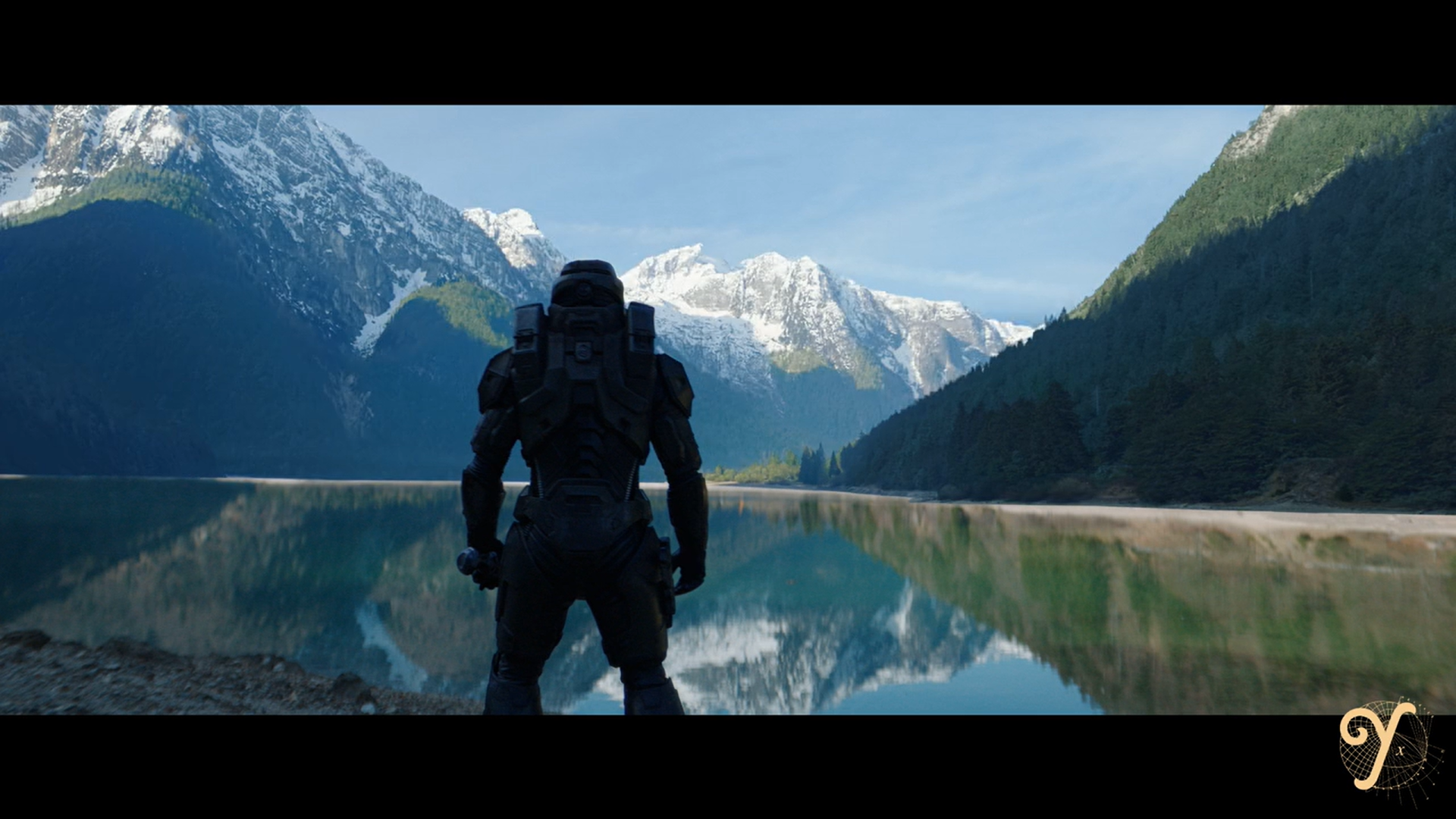
Another major task was adding the iconic Halo ring itself. The Halo ring is a massive structure with a radius of 6,000 kilometers, posing a significant challenge in achieving the right balance for its curvature as it stretched into the atmosphere. We produced multiple wedges of the ring, experimenting with its curvature to ensure that it felt immense and distant yet integrated naturally into the environment. The ring had to fade gracefully into the sky, creating the illusion of a colossal structure encircling the planet.
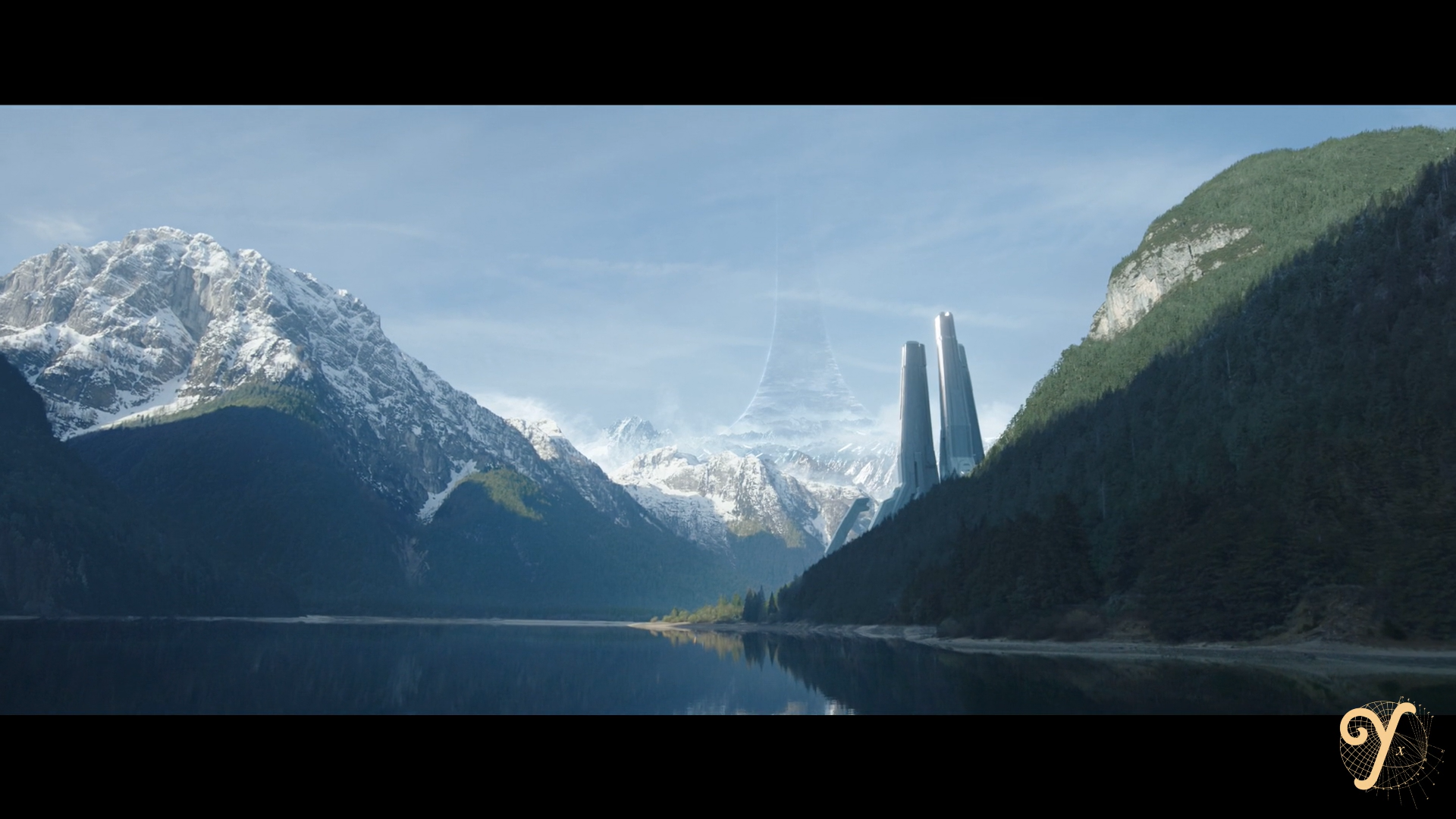
In addition to the Halo ring, we were responsible for creating the Covenant spaceship crash site. This scene required depicting the aftermath of a large Covenant ship colliding with one of the mountains surrounding the lake.
We modeled the destroyed spaceship, paying close attention to the impact on the landscape, including debris and structural damage to the mountain itself. Fire, smoke, and scattered wreckage were added to enhance the aftermath of the crash, lending the scene a sense of chaos and destruction. This sequence was particularly demanding, as it needed to balance the natural beauty of the Halo landscape with the devastation caused by the crash.
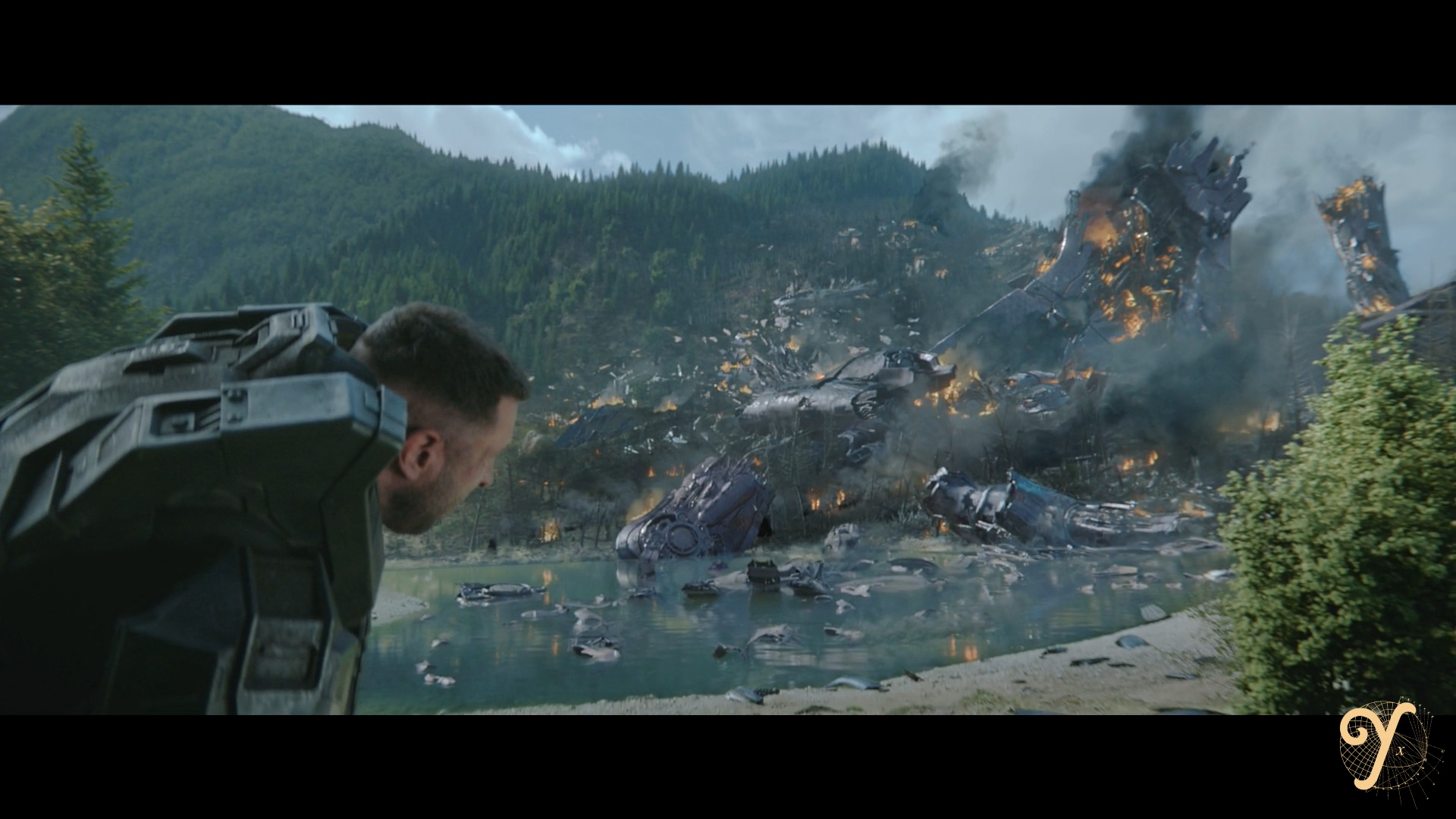
As the sequence progressed, it led to the reveal of a Forerunner structure, a 100-meter-tall advanced technological marvel that served as a key plot element—a door to activate the Halo. This structure was designed with sleek, futuristic materials, blending seamlessly with the surrounding environment while standing as a testament to Forerunner technology.
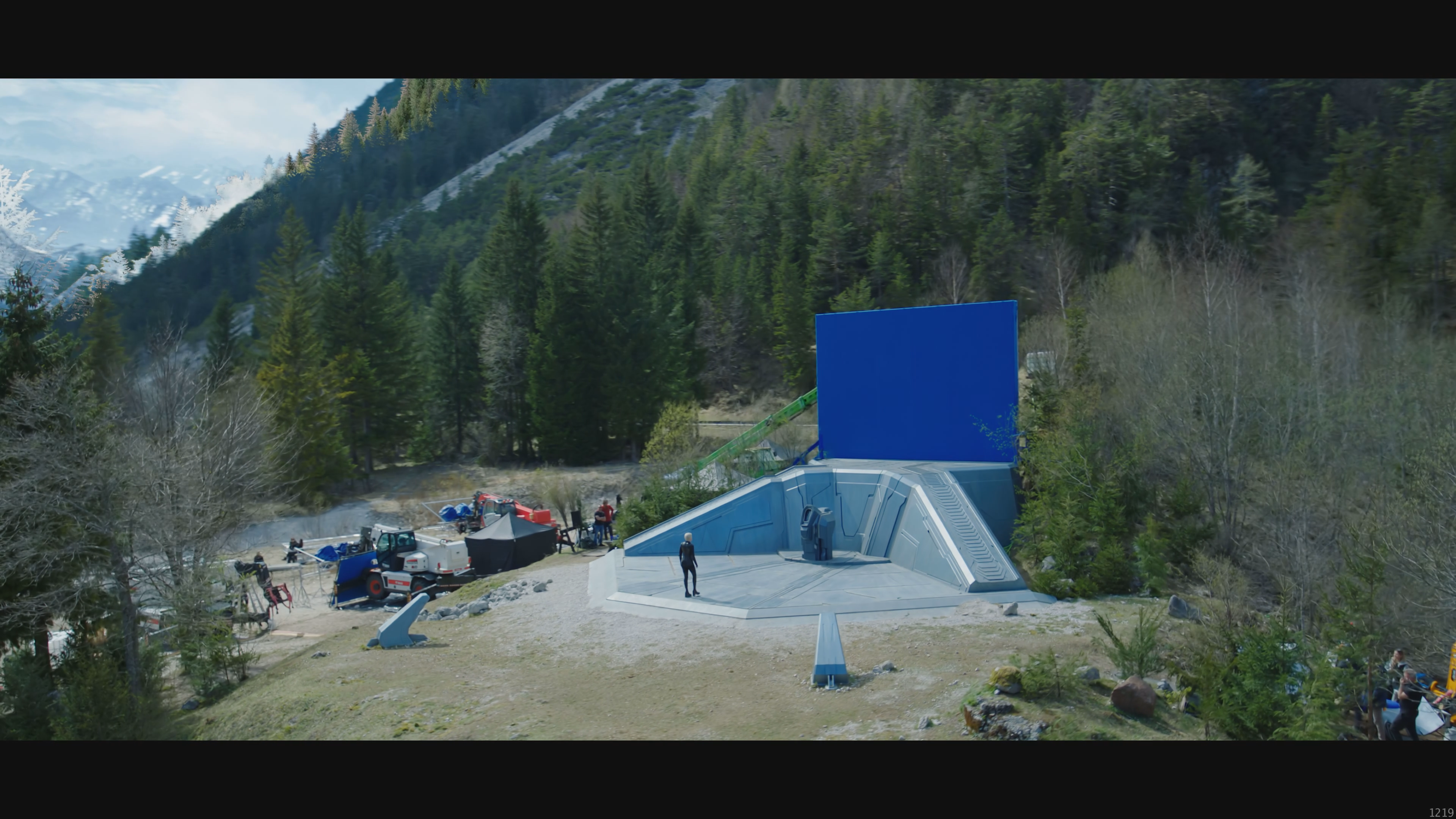
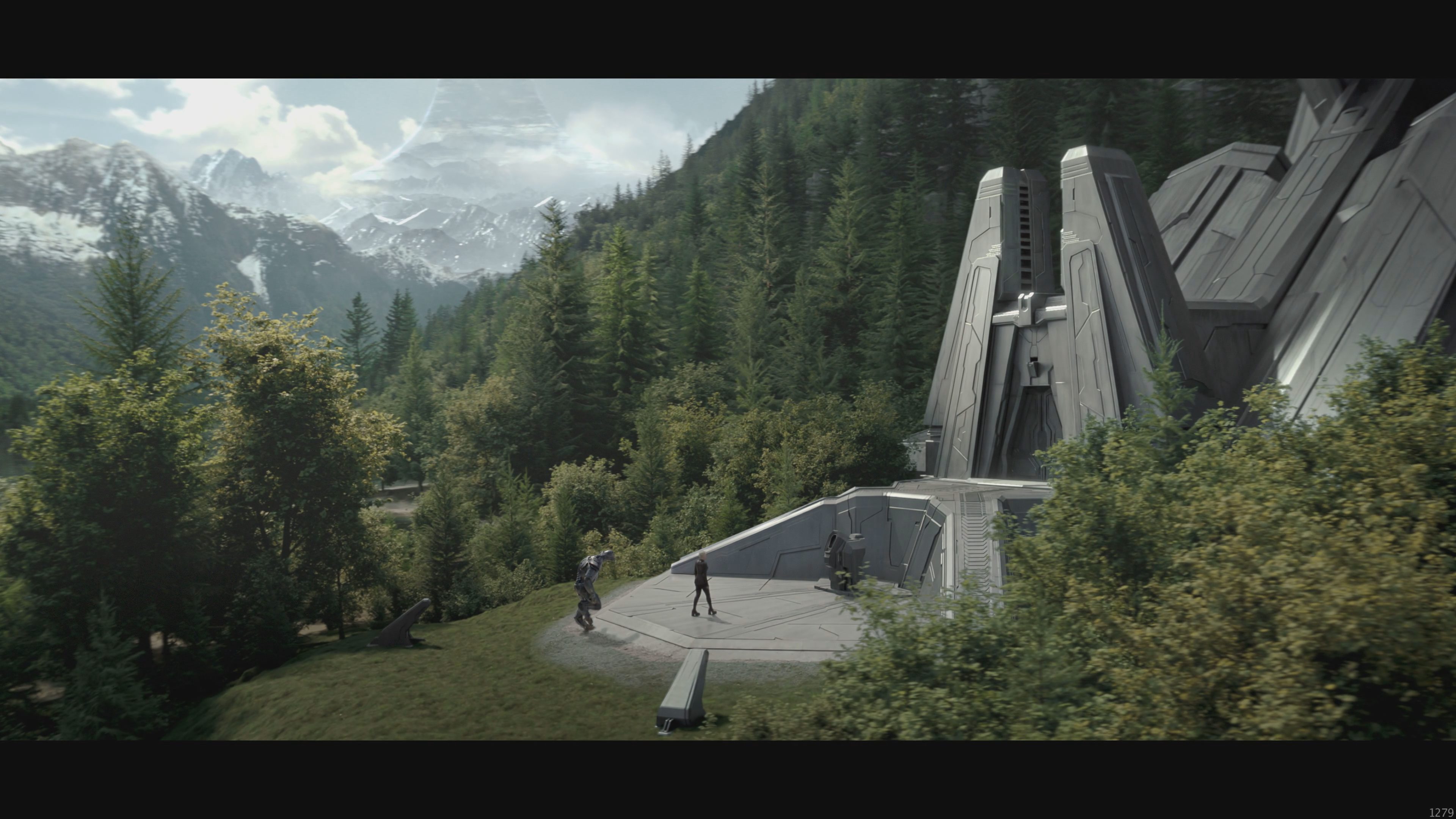
The sequence also featured a pivotal fight between Master Chief and a Covenant creature. While the combat choreography was handled by MPC Toronto, our team at The Yard focused on crafting the surrounding environment. This environment was a blend of digital matte paintings and fully CG-rendered elements, including trees, cliffs, and the lake. We meticulously modeled and scattered these elements to match the physical shoot, ensuring the digital extensions felt natural and cohesive with the live-action footage.
'Halo - Season 2' - Fight sequence VFX breakdown published by 'Befores & Afters'
One of the greatest challenges in this sequence was managing the inconsistent lighting during the shoot. The weather varied dramatically, shifting from bright blue skies with sharp sunlight to overcast conditions. To maintain visual consistency across the sequence, our compositing supervisor, Jeremy Pierre, spent considerable time rebalancing the plates. This ensured that the lighting felt uniform, regardless of the changing conditions on set.
Finally, one of the more delicate tasks was dealing with the reflections in Master Chief’s helmet. We had to remove reflections of the crew and carefully insert the newly constructed environment into his helmet's visor, making sure the reflections felt authentic and seamless. This added a final touch of realism, grounding the character within the digital world we had built around him.
